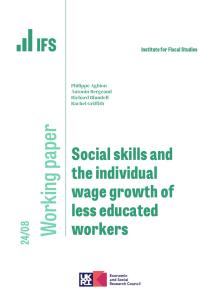In his spring statement last week Philip Hammond made one interesting announcement. Just the one. Oddly, it has received almost no attention.
He noted that the current remit of the Low Pay Commission, to raise the National Living Wage (the name given to the minimum wage for those aged 25 and over) to 60 per cent of median earnings by 2020, would need renewing. He said he wanted to be ambitious, with the “ultimate objective of ending low pay in the UK”. He didn’t spell out what he meant, but the most widely accepted international definition of low pay is pay at less than 66 per cent of median earnings. That looks like an intimation of a desire to increase the living wage further after it reaches £8.60 or so next year.
The first thing to say is that this is all a bit remarkable. This is a chancellor from a party that resisted the original introduction of the minimum wage 20 years ago. The 2015 announcement of the living wage by George Osborne looked radical enough. A minimum wage at 60 per cent of median earnings is high by international standards. For the fiscally conservative Mr Hammond to suggest he would like to go even further is an indication of just how much things have changed.
Second, there is a real issue to address. Today, two thirds of the working-age poor are in work or live with someone in work. Low pay is one contributor to this.
Third, he wisely didn’t simply set a new target. Rather he announced a review, to be led by Professor Arin Dube, a renowned expert on labour markets and minimum wages at the University of Massachusetts, to look at the international evidence on the effects of minimum wages. Such a review is overdue. We all want people to be paid as much as possible. There is clearly a role for a minimum wage. But there is also clearly a limit to that role and, frankly, we don’t know at what point the benefits of higher pay, and perhaps enforced higher productivity, begin to be outweighed by lower employment or higher prices or other disruptions to business. The initial introduction of the living wage looked risky, but perhaps a risk worth taking. Going much further without a serious review of the evidence would be reckless.
This is a big deal. Today, about 1.6 million employees aged 25 and over are paid exactly at the living wage of £7.83 an hour. That’s 600,000 more than were affected by the old minimum wage back in 2015, and more than three times as many as were on the minimum wage in the early 2000s, soon after it was introduced.
A further 3 million are paid within 50p of the current hourly minimum. The Low Pay Commission reckons that in 2017 up to 7 million workers had their wages affected by that year’s increase. By any measure this is a big intervention in the labour market; and it is set to get bigger. By the time it reaches 60 per cent of median earnings in 2020 — equivalent to about £8.60 an hour — the living wage could directly affect about one in six employees. Taking it further, moving it to the two thirds of median earnings which “ending low pay” might require could take the numbers affected to one in four.
Coverage in some sectors is already very high. About 30 per cent of employees in hair and beauty, cleaning and hospitality are on the living wage. The policy currently affects twice as many women as men and five times as many part-timers as full-timers, reflecting who it is that currently faces low pay. And in those last statistics is one of the strongest arguments for a minimum wage. It tends to be women and part-timers who have least bargaining power and who are most likely to be exploited — in the economic sense of being paid less than their productivity would warrant — as a result of that lack of power. Finally, note that this is an intervention for the private (and voluntary) sector, not the public sector. Very low wages are an overwhelmingly private sector phenomenon.
Up to now the experiment with the living wage looks to have been broadly successful. Certainly, hourly wages for the lowest paid have risen a lot faster than average wages over the past three years. The Low Pay Commission concludes that employment effects have been “minimal”. There are challenges though.
Enforcement is one. It’s all very well to set a statutory minimum but not much good if employers don’t comply, and the most recent estimates suggest nearly 400,000 people were paid below the living wage. The chances of being caught for underpayment remain low.
Related to enforcement, the more one layers on regulations that benefit those who are defined as employees, the more one creates an incentive to label people as self-employed. Enforcing the distinction across hundreds of thousands of small businesses is never going to be easy. And then there is the issue of progression. There is a problem of low pay, but there is also a problem of being stuck on low pay, and a large part of the problem we face is that too many people are stuck. Raising the minimum alone won’t help with pay progression. It could even make the problem worse if firms hollow out layers just above the minimum in order to maintain differentials.
For all this, so far it looks like Mr Osborne’s gamble has paid off. Hopefully, Professor Dube will tell us how much further, if at all, increases can be pushed. Politicians are sometimes mocked for announcing reviews rather than announcing policies. In this case Mr Hammond should be congratulated.
This article was originally published in The Times and is reproduced here with full permission. Paul Johnson is director of the Institute for Fiscal Studies. Follow him on @PJTheEconomist.








